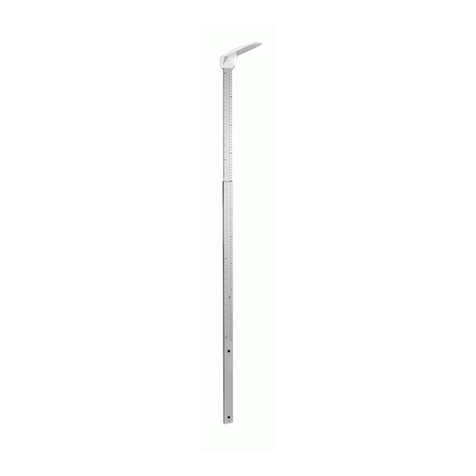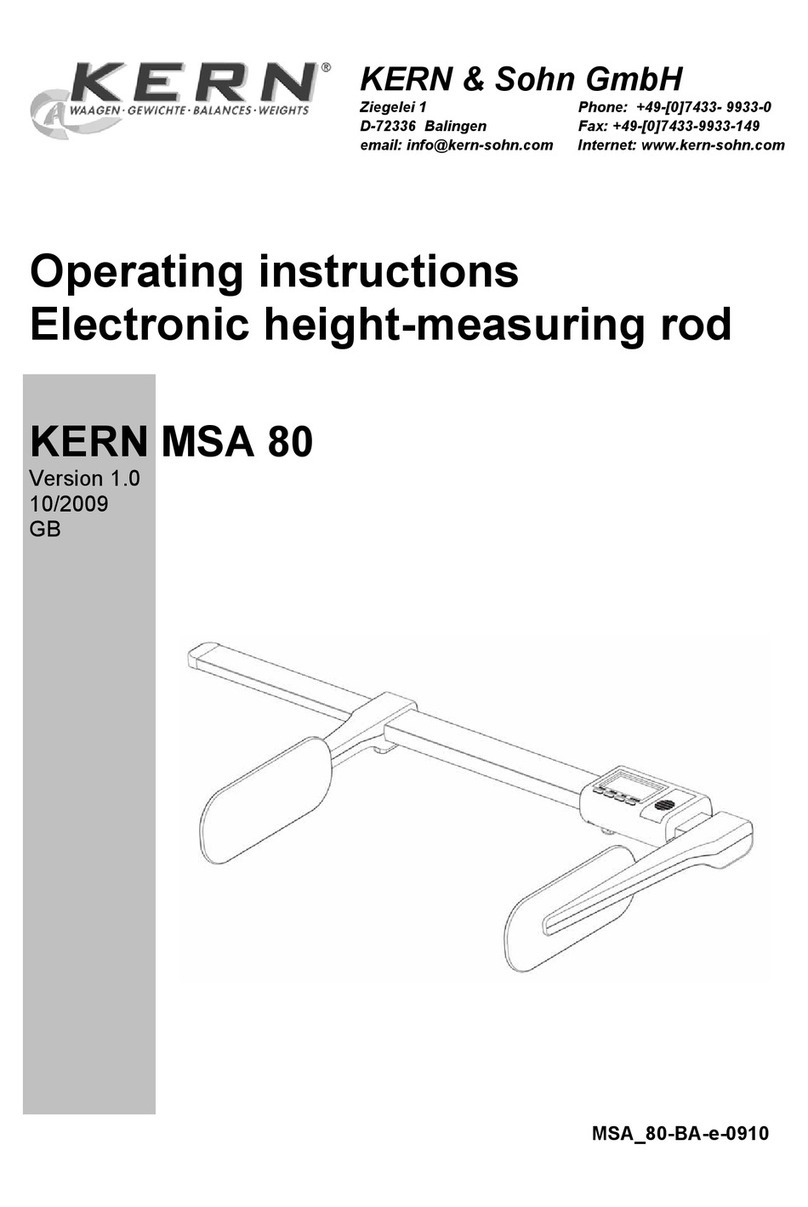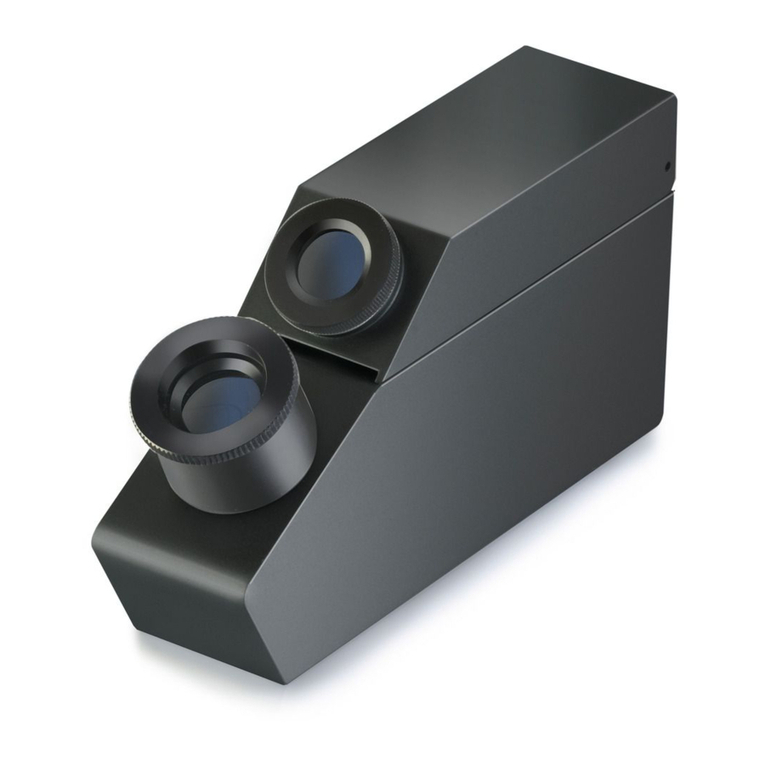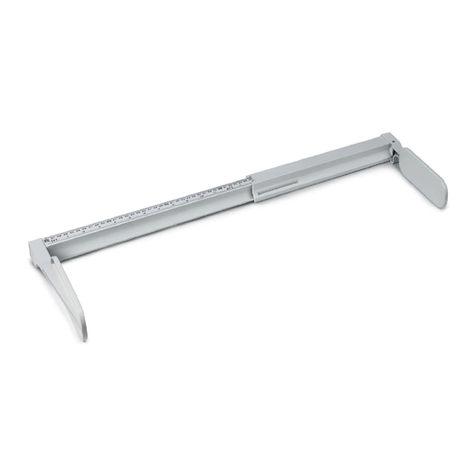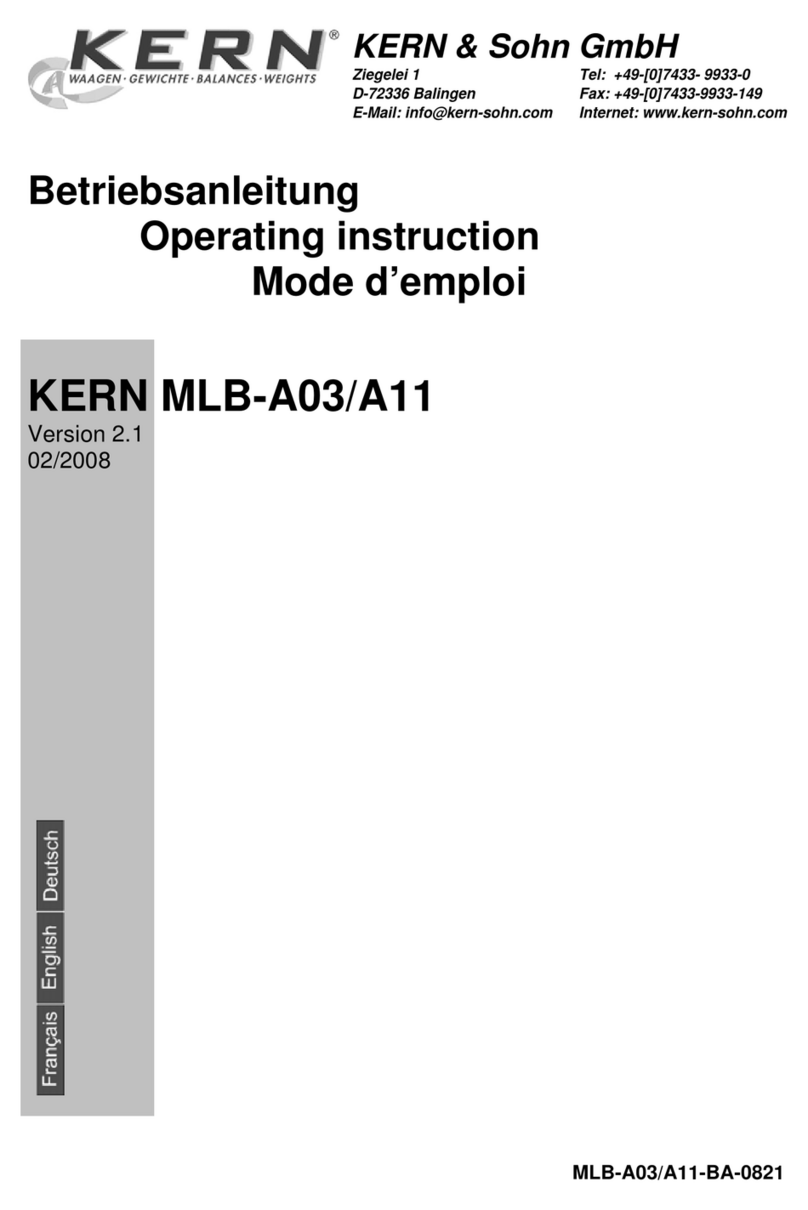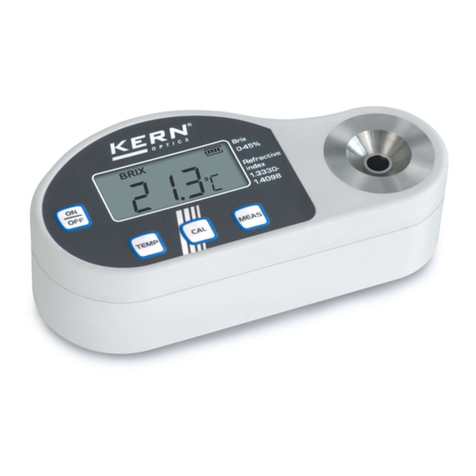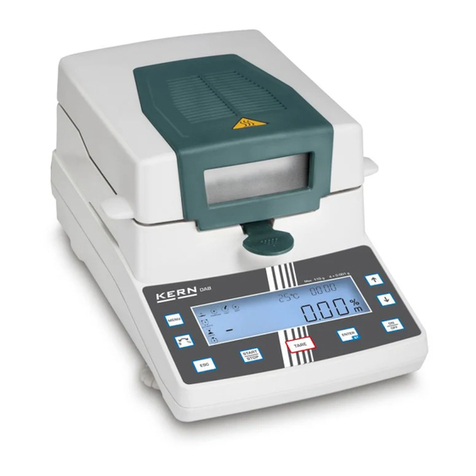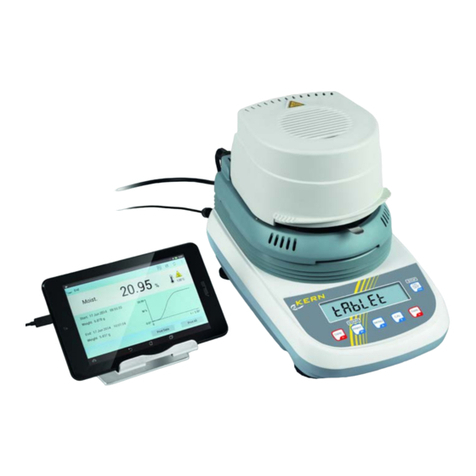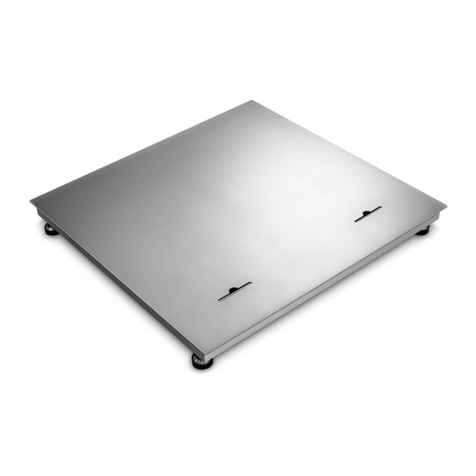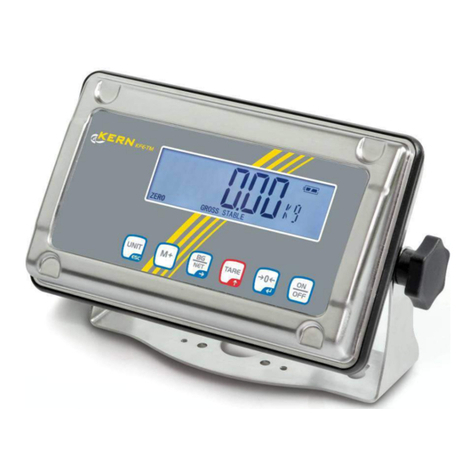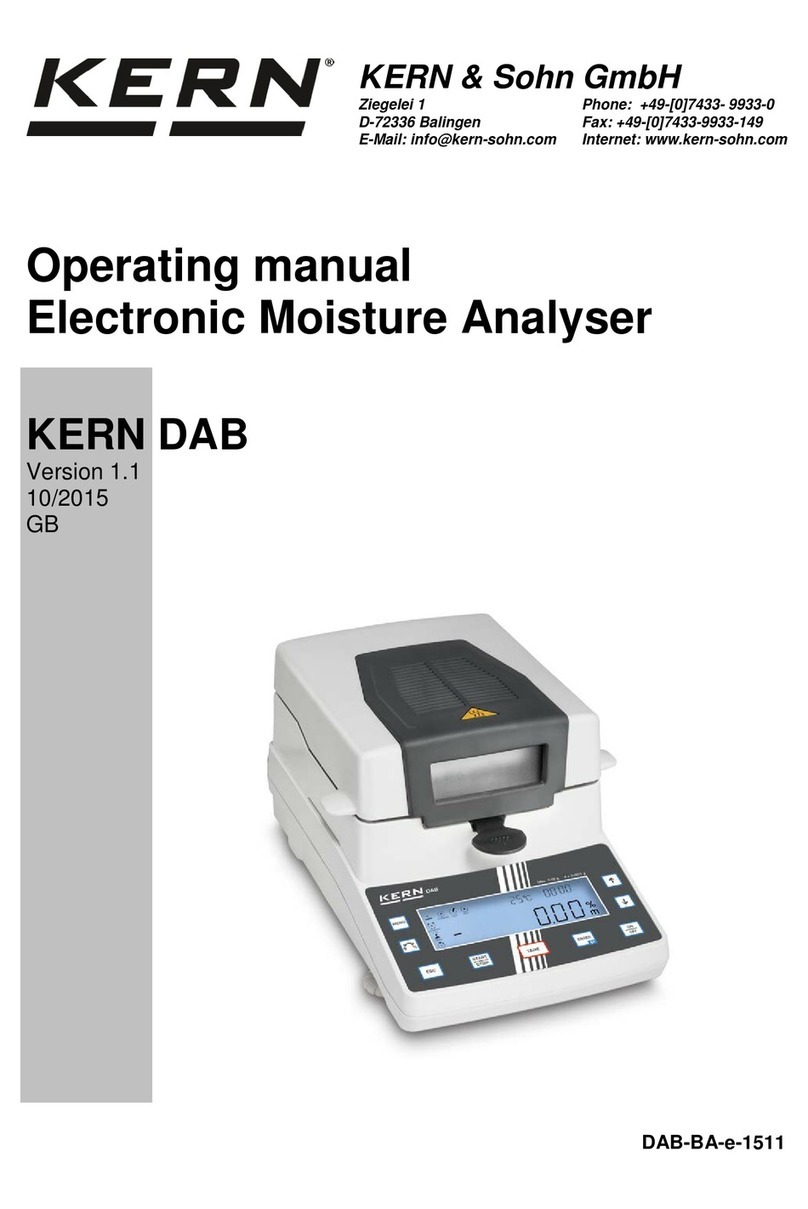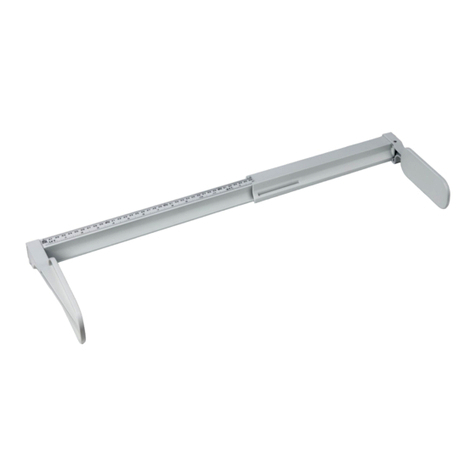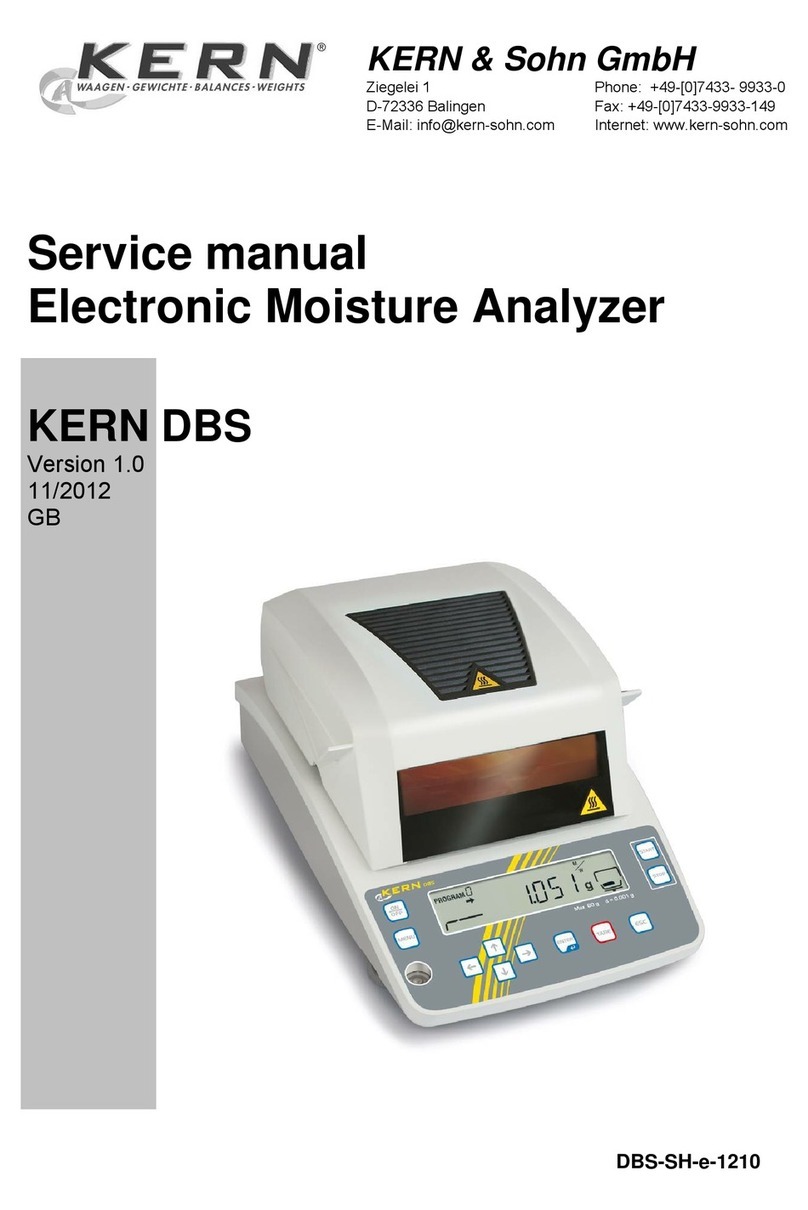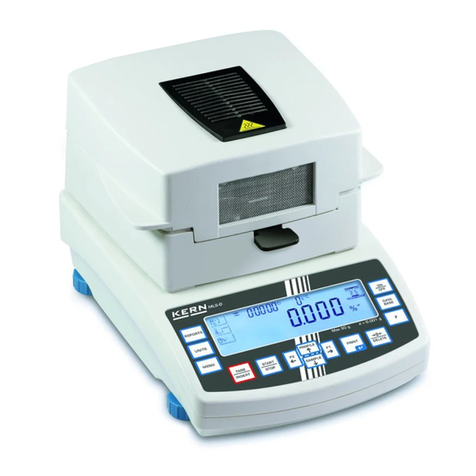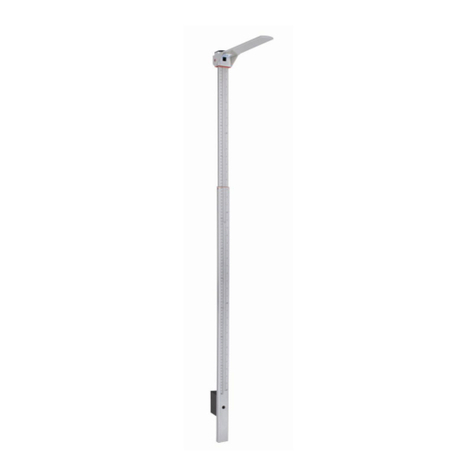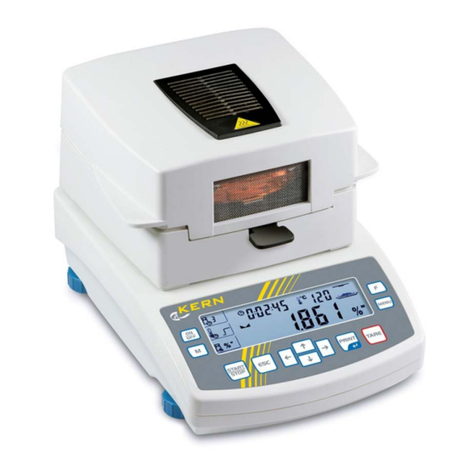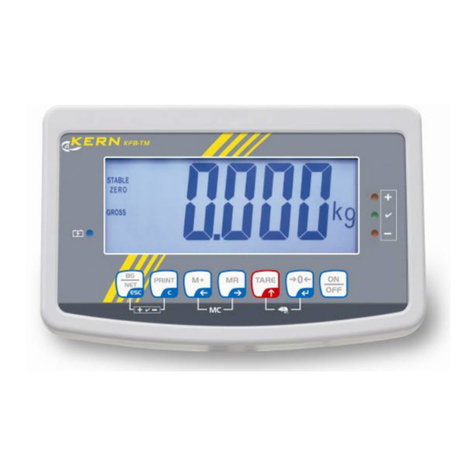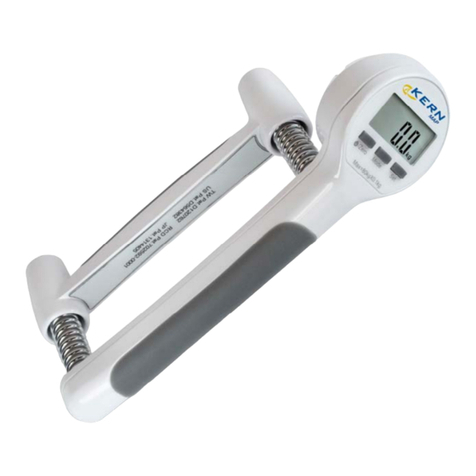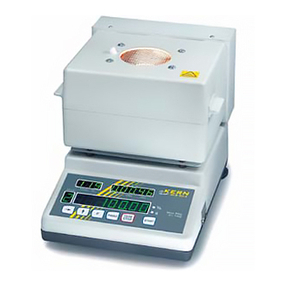
7
14
8
9
10
12
11
13
7.1 Zero point calibration
▸ Hold up the refractometer against a sufficiently bright light source and look through
the eyepiece [5], holding the rubber eyeshade [4]closely against your eye/glasses.
▸ Rotate the eyepiece [5]to adjust it for your eyesight, until you can see the scale
sharply.
▸ Open the prism cover [1].
▸ Thoroughly clean the prism [2]and the underside of the prism cover [1]using a so
cloth or soft paper (with alcohol if necessary)and wipe dry.
▸ Now apply a few drops of the calibration liquid [10]onto the prism surface [2].
▸ Close the prism cover [1]. The amount of fluid should be sufficient to moisten most
of the prism surface. There should not be any air bubbles between the measuring
prism [2]and prism cover [1].
▸ Wait about 30 seconds to allow the temperatures of the fluid and prism to
equalise.
▸ Look through the eyepiece [4]while pointing the refractometer‘s prism surface [2]
at a bright light source.
▸ Through the eyepiece [4], you will see a bright and a blue field. The boundary line
between them shows the measured value on the scale which is also visible
through the eyepiece [4].
▸ Use the supplied adjustment tool [11]to turn the adjustment screw [3]behind
the prism surface [2](under the rubber cap), and adjust the scale so that the
measuring device is optimally set up by moving the boundary line upwards or downwards.
Calibration value: 0 % (Brix)
▸ Repeat step 4 (cleaning).
Important!
The ambient/room temperature and the sample temperature influ-ence
the refractometer measuring result. The scales of the refractometer
models, which have "BB" in its name, are designed for an ambient
7.2 Additional advice
It is important that the samples being measured are representative samples. For
samples that evaporate easily, measurements should be carried out quickly. The
samples should be at the same temperature as the measuring instrument in order
to achieve an accurate result.
7.3 Measuring procedure
▸ Make sure your hands are dry before handling the refractometer.
▸ Open the prism cover [1]and use the supplied pipette [8]to apply a few drops of
the sample liquid [8]onto the prism surface [2]. Close the prism cover [1]. Spread
the liquid evenly by pressing down on the prism cover [1]and elimi-nate any air
bubbles present.⇨
▸ Hold the device horizontally and wait about 30 seconds (for optimal tempera-ture
equalisation between the sample and device).
▸ View the measurement scale through the eyepiece [4]. Point the prism surface [2]
of the refractometer at a bright light source while doing this.
▸ Rotate the adjustment ring [5]on the eyepiece [4]to adjust the focus.
▸ The boundary line will move on the measurement scale depending on the concen-
tration. This bright/dark boundary line shows the result on the scale.
▸ If the temperature deviates from +20 °C and a refractometer without ATC is used,
correct the measured result using the corresponding value from the temperature
correction table [13].
▸ Carefully clean the supplied pipette [8]and the refractometer aer carrying out
the measurement.
Important!
Aer every measurement, use a lint-free, absorbent cloth to remove
the fluids from the prism surface [2]and prism cover [1]. Then
carefully clean the prism and prism cover using a cloth moistened
with water or if necessary alcohol, and dry both parts using a so,
dry and lint-free cloth. Avoid rubbing the prism [2].
9
11 ORA_1SB_2SB_3SB-BA-e-1510
13 Brix to refractive index (nD) conversion table
BRIX
Refractive
indexBRIX
Refractive
indexBRIX
Refractive
index
0 1.33299301.38115601.44193
2 1.33586321.38478621.44650
3 1.33732331.38661631.44881
4 1.33879341.38846641.45113
5 1.34026351.39032651.45348
6 1.34175361.39220661.45584
7 1.34325371.39409671.45822
8 1.34476381.39600681.46061
9 1.34629391.39792691.46303
101.34782401.39986701.46546
111.34937411.40181711.46792
121.35093421.40378721.47037
131.35250431.40576731.47285
141.35408441.40776741.47535
151.35568451.40978751.47787
161.35729461.4118176 1.48040
171.35891471.41385771.48295
181.36054481.41592781.48552
191.36218491.41799791.4881
201.36384501.42009801.49071
211.36551511.42220811.49333
221.36720521.42432821.49597
241.37060541.42862841.50129
251.37233551.43080851.50398
261.37406561.43299
271.37582571.43520
281.37758581.43743
291.37936591.43967
Data from "ICUMSA" International Commission for Uniform Methods
of Sugar Analysis, at 20 °C and 589 nm wavelength.
!
8. Cleaning and maintenance
Clean the refractometer using a so, lint-free cloth moistened with either water
or, if necessary, alcohol. Do not use any aggressive or abrasive cleaning agents.
Never immerse the device in water or hold it under running water. Never handle the
device with wet or damp hands.
Never touch the measuring prism [2]with hard tools made from plastic, wood,
rubber, metal, glass etc. Hard objects can quickly damage the relatively so prism
glass, resulting in measurement errors.
The refractometer is maintenance-free.
Cleaning should be carried out immediately before and aer each use of the refrac-
tometer to maximise its life and optimise measurement results.
9. Storage
Store the refractometer in a dry, non-corrosive environment, preferably
between 10 °C and 30 °C.
10. Service
Aer reading this operating manual, if you have any questions about setting up
or using the refractometer, or if any unexpected problem occurs, please contact
your dealer. The device housing may only be opened by trained service technicians
authorised by KERN.
11. Disposal
The packaging consists of environmentally friendly materials which can be disposed
of via local recycling facilities.
The device and storage box should be disposed of by the operator in accordance
with applicable national or regional regulations at the place of use.
12. Additional information
The product may differ slightly from the illustrations. Avoid exposing the refracto-
meter to direct sunlight. Never bring the refractometer into contact with solvents.
13. Brix to refractive index (nD) conversion table
Data from „ICUMSA“ International Commission for Uniform Methods
of Sugar Analysis, at 20 °C and 589 nm wavelength.
!
ORA_1SB_2SB_3SB-BA-e-1510
Table 1: International Temperature Correction Table for°Brix (% sugargradient)
Correcttheresultbythefollowingvalues(refractometermustbecorrectlyadjustedat20°C)
% Brix
reading
0.0 5.0 10.0 15.0 20.0 25.0 30.0 35.0 40.0 45.0 50.0 55.0 60.0 65.0 70.0 75.0 80.0 85.0
Temperature °C
10.0 -0.53 -0.56 -0.59 -0.62 -0.65 -0.67 -0.69 -0.71 -0.72 -0.73 -0.74 -0.75 -0.75 -0.75 -0.75 -0.75 -0.74 -0.73
11.0 -0.49 -0.52 -0.54 -0.57 -0.59 -0.61 -0.63 -0.64 -0.65 -0.66 -0.67 -0.68 -0.68 -0.68 -0.68 -0.67 -0.67 -0.66
12.0 -0.44 -0.47 -0.49 -0.51 -0.53 -0.55 -0.56 -0.57 -0.58 -0.59 -0.60 -0.60 -0.61 -0.61 -0.60 -0.60 -0.60 -0.59
13.0 -0.40 -0.41 -0.43 -0.45 -0.47 -0.48 -0.50 -0.51 -0.52 -0.52 -0.53 -0.53 -0.53 -0.53 -0.53 -0.53 -0.52 -0.52
14.0 -0.34 -0.36 -0.38 -0.39 -0.40 -0.42 -0.43 -0.44 -0.44 -0.45 -0.45 -0.46 -0.46 -0.46 -0.46 -0.45 -0.45 -0.44
15.0 -0.29 -0.31 -0.32 -0.33 -0.34 -0.35 -0.36 -0.37 -0.37 -0.38 -0.38 -0.38 -0.38 -0.38 -0.38 -0.38 -0.37 -0.37
16.0 -0.24 -0.25 -0.26 -0.27 -0.28 -0.28 -0.29 -0.30 -0.30 -0.30 -0.31 -0.31 -0.31 -0.31 -0.31 -0.30 -0.30 -0.30
17.0 -0.18 -0.19 -0.20 -0.20 -0.21 -0.21 -0.22 -0.22 -0.23 -0.23 -0.23 -0.23 -0.23 -0.23 -0.23 -0.23 -0.23 -0.22
18.0 -0.12 -0.13 -0.13 -0.14 -0.14 -0.14 -0.15 -0.15 -0.15 -0.15 -0.15 -0.15 -0.15 -0.15 -0.15 -0.15 -0.15 -0.15
19.0 -0.06 -0.06 -0.07 -0.07 -0.07 -0.07 -0.07 -0.08 -0.08 -0.08 -0.08 -0.08 -0.08 -0.08 -0.08 -0.08 -0.08 -0.07
20.0 0.00 0.00 0.00 0.00 0.00 0.00 0.00 0.00 0.00 0.00 0.00 0.00 0.00 0.00 0.00 0.00 0.00 0.00
21.0 0.06 0.07 0.07 0.07 0.07 0.07 0.08 0.08 0.08 0.08 0.08 0.08 0.08 0.08 0.08 0.08 0.08 0.07
22.0 0.13 0.14 0.14 0.14 0.15 0.15 0.15 0.15 0.16 0.16 0.16 0.16 0.16 0.16 0.15 0.15 0.15 0.15
23.0 0.20 0.21 0.21 0.22 0.22 0.23 0.23 0.23 0.23 0.24 0.24 0.24 0.24 0.23 0.23 0.23 0.23 0.22
24.0 0.27 0.28 0.29 0.29 0.30 0.30 0.31 0.31 0.31 0.32 0.32 0.32 0.32 0.31 0.31 0.31 0.30 0.30
25.0 0.34 0.35 0.36 0.37 0.38 0.38 0.39 0.39 0.40 0.40 0.40 0.40 0.40 0.39 0.39 0.39 0.38 0.37
26.0 0.42 0.43 0.44 0.45 0.46 0.46 0.47 0.47 0.48 0.48 0.48 0.48 0.48 0.47 0.47 0.46 0.46 0.46
27.0 0.50 0.51 0.52 0.53 0.54 0.55 0.55 0.56 0.56 0.56 0.56 0.56 0.56 0.55 0.55 0.54 0.53 0.52
28.0 0.58 0.59 0.60 0.61 0.62 0.63 0.64 0.64 0.64 0.65 0.65 0.64 0.64 0.64 0.63 0.62 0.61 0.60
29.0 0.66 0.67 0.68 0.69 0.70 0.71 0.72 0.73 0.73 0.73 0.73 0.73 0.72 0.72 0.71 0.70 0.69 0.68
30.0 0.74 0.75 0.77 0.78 0.79 0.80 0.81 0.81 0.81 0.82 0.81 0.81 0.81 0.80 0.79 0.78 0.77 0.75
14. Annex
Table 1: International Temperature Correction Table for °Brix (% sugar gradient)
Correct the result by the following values (refractometer must be correctly
adjusted at 20 °C).
temperature of +20 °C! If the measurements are carried out at a temperature other than +20 °C,
the results must be correspondingly corrected. A correction table can be found in the annex,
Point 14. Refractometer models, which have "BA" in its name, are equipped with an automatic
temperature compensation (ATC). Between +10°C and +30°C measurement differences due to
temperature changes are automatically compensated.












